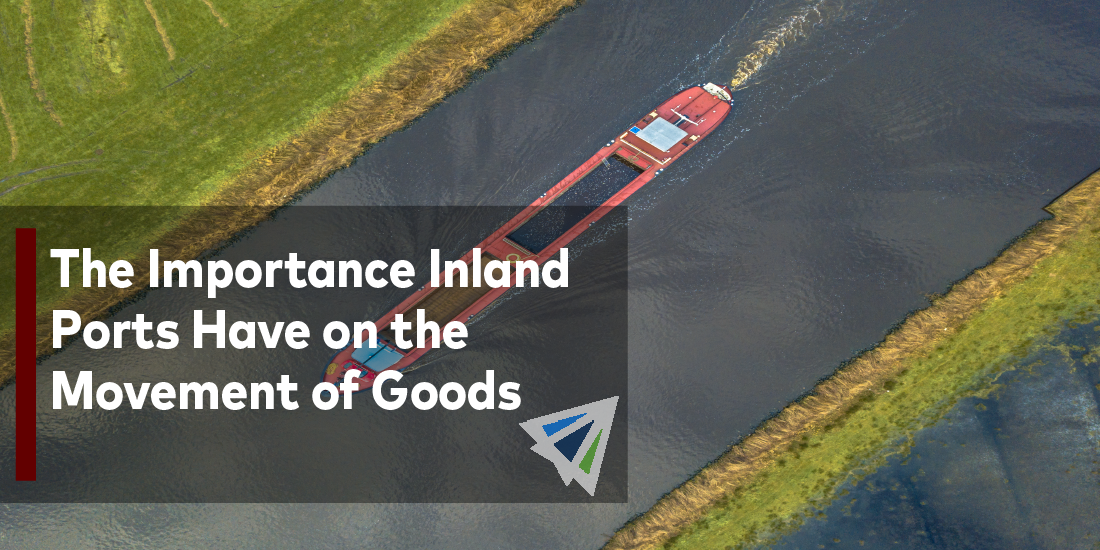Inland ports play a crucial role in the movement of goods and services. They also help increase intermodal capacity for inland freight distribution and allows for off-site storage.
What is an inland port?
Inland ports can be on an inland waterway, like a river/lake/canal. In some instances, inland ports can also be referred to as a dry port – which is an inland intermodal terminal that connects directly to a road or rail and then to a seaport.
Inland ports are typically located close to or along Class I railroad lines and major road networks. Inland ports also offer intermodal transfer facilities and international trade processing and other services that can be linked to specific seaports. Additionally, warehousing facilities and distribution centers are typically co-located with inland ports, even directly on site.
Key Takeaways:
- Indiana ports rank first among inlands ports for the first time ever
- Examples of major inland ports and their benefits
How Inland Ports Can Address Supply Chain Congestion
Options, options, options. That’s one of the benefits inland ports can have, which in turn can help decrease supply chain congestion.
How may you ask?
Inland ports provide shippers with the opportunity to have more options, which can possibly lead to cheaper transport costs and faster transit times.
Some additional benefits inland ports have:
- more sustainable options as rail traveling to and from uses less fuel than trucks
- more available space for warehousing and distribution that are away from seaports
- avoid heavy congestion at seaports
Examples of Major Inland Ports
What are some examples of major inland ports?
Inland Port Greer is an example of a major inland port, owned and operated by the South Carolina Ports Authority.
The port has 24/7 gates and next-day availability of containers, with rail service provided exclusively by Norfolk Southern. Recently, as of November 2022, the port celebrated the completion of the first phase of a $30 million plus capacity expansion project.
The Midwest Inland Port is a “multi-modal transportation hub in Decatur, Illinois delivering both domestic and international flexibility, connecting the Midwest to the East, West and Gulf Coasts of North America.”
Some other advantages the port has direct access to four railroads connecting to all North American rail networks, a channel close to coastal and export markets, an airport that has a U.S. Customs Office, a Fixed-Based Operator and large enough runways that are able to handle big aircrafts.
The International Inland Port of Dallas is “an intermodal and logistics district that encompasses 7,500 acres and 5 municipalities.”
The port also has direct access to three major interstate highways: I-35, I-20, and I-45, and intermodal access to the Ports of Los Angeles and Long Beach.
Looking Ahead
Should you have any questions regarding this and how it could impact your shipments, please reach out to our team today.
Additionally, we have our weekly market updates that can provide you with relevant freight news, updates, developments across the industry, and more.
